Infinity, June 1956: A Retro Review
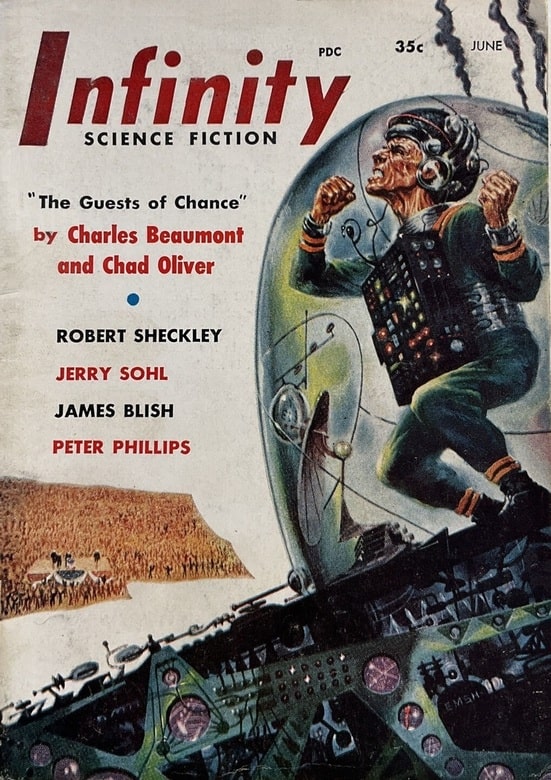 |
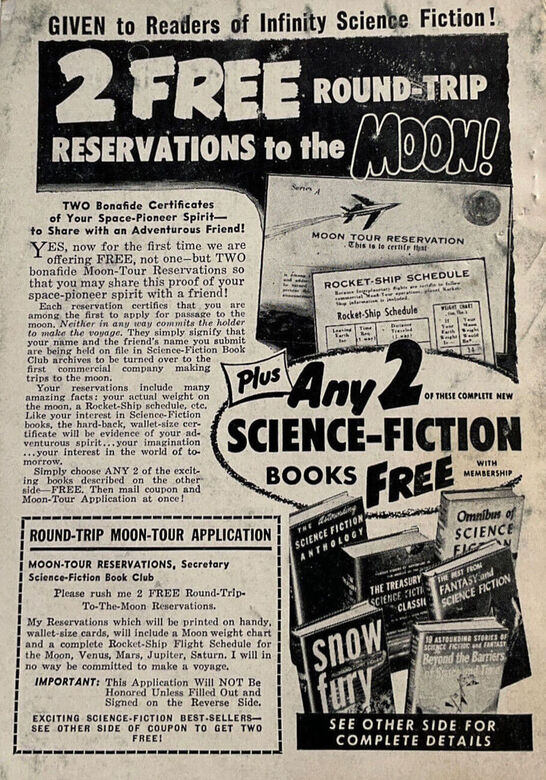 |
Infinity Science Fiction, June 1956. Cover by Ed Emsh
In my previous Retro Review I covered If, which I called a “classic digest magazine of what might be called the “second tier” of SF magazines.” Infinity was another, though it lasted for a much shorter time — 19 issues from 1955 through 1958. (I note for the record that the magazines of the so-called “first tier” – that is, the Big Three of Astounding/Analog, Galaxy, and F&SF – all went through ups and downs in quality and sometimes other magazines surpassed them – notably Venture in the late ‘50s, If in the mid-60s, Thrilling Wonder and Startling in the early ‘50s, and others, including, as John O’Neill reminds me, Amazing and Fantastic in the early ’60s under Cele Goldsmith Lalli. I’ll also note that there was surely a third tier, magazines of lesser quality than the likes of If and Infinity.)
The editor of Infinity was the greatly respected Larry T. Shaw. The original anthology series Infinity, from the early 1970s, edited by Robert Hoskins, was published by Lancer Books, which was the successor company to Royal Publications, the firm responsible for the magazine. Indeed Robert Hoskins was the immediate successor to Larry Shaw as editor of the Lancer SF line. Hoskins did reprint the most famous story the magazine published, Arthur C. Clarke’s Hugo winner “The Star,” in the first volume of the original anthology, and therein he called the anthology the “lineal descendant” of the magazine.
[Click the images for Infinitely larger versions.]
Table of Contents for Infinity Science Fiction, June 1956
As I said above, “The Star,” which appeared in the first issue of Infinity, was the most famous story they published. I actually bought this particular issue for one story — Betsy Curtis’ “Rebuttal,” which is explicitly a rebuttal (though, alas, not a very impressive one) to “The Star.” But there are of course several other stories in the issue. Here’s the list:
“The Guests of Chance,” by Charles Beaumont and Chad Oliver (6,200 words)
“The Stilled Patter,” by James E. Gunn (2,500 words)
“Under the Skin,” by Leslie Perri (10,800 words)
“Death in Transit,” by Jerry Sohl (6,200 words)
“Variety Agent,” by Peter Phillips (1,900 words)
“Sponge Dive,” by James Blish (5,300 words)
“Rebuttal,” by Betsy Curtis (3,300 words)
“Round-Up Time,” by Chester Cohen (2,200 words)
“The Mob,” by Robert Sheckley (2,000 words)
I’ll start by noting with mild amusement the mild coincidences here with my last few Retro Reviews. I just covered the June 1955 issue of F&SF, which featured consecutive stories by Charles Beaumont and Chad Oliver, who appear even closer together on this TOC! In my look at If for December 1957 I reviewed a Rog Phillips story and cautioned people not to confuse him with his close contemporary Peter Phillips — who appears here. Betsy Curtis’ first story was covered a short while ago — here’s a slightly later one. And I’m reading a Blish novella right now that was published back-to-back with a Silverberg novella I just covered. None of this is that surprising, to be sure — that’s what the SF field was like in the 1950s.
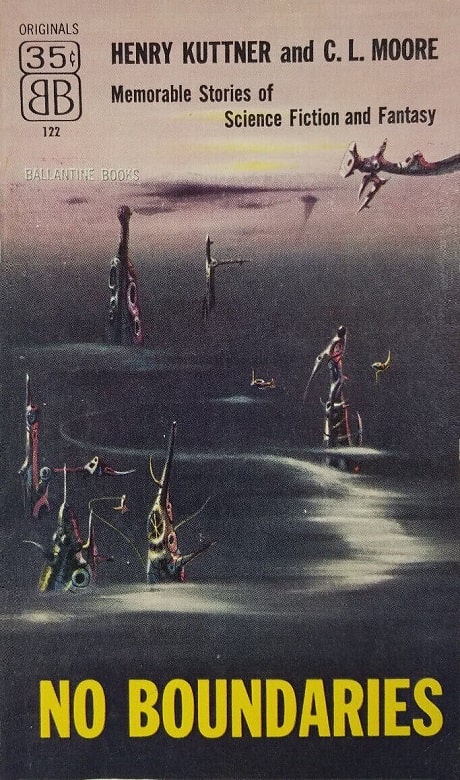 |
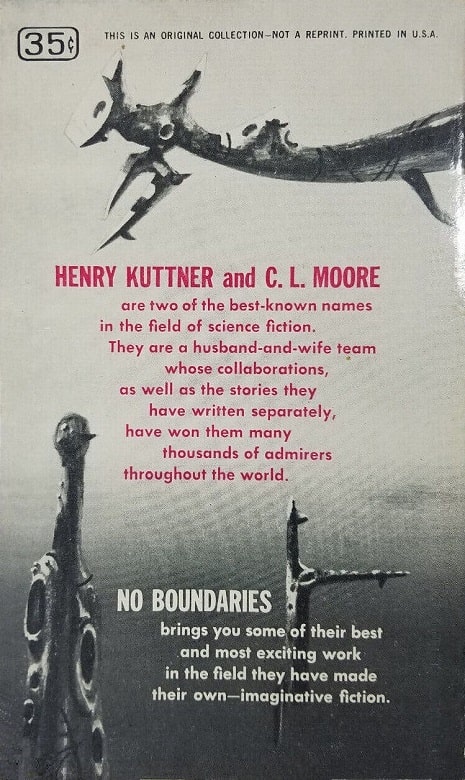 |
No Boundaries (Ballantine Books paperback original, December 1955). Cover by Richard Powers
There were also some departments in Infinity. “Infinity’s Choice” is a review column in which Damon Knight covers just one particularly outstanding book — in this case it’s No Boundaries, a story collection by Henry Kuttner and C. L. Moore. “Fanfare” is devoted to reprinting particularly good pieces from fanzines — here we see “The Use of Geometry in Science Fiction,” by Norman J. Clarke, from a Canadian ‘zine called Wendigo, which amusingly extends the idea of a love triangle in specifically geometrical terms. “By The Editor” is, obviously, an editorial, here mostly discussing Infinity‘s editorial philosophy. And “Feedback” is a letter column, with contributions from Allen Paul Steiger, Disgruntled Uniqorn, Gordon V. Carr, John Courtois, W. C. Brandt, and Denni Moore.
Illustration for “The Guests of Chance” by Emsh
Collaborations can come in a couple of forms — one in which the strengths of each author reinforce the weaknesses of the other, resulting in a better story. And one in which neither author is playing to their strength and each seems to hope the other can fix things. “The Guests of Chance” is in the latter category. It is a dire supposed comedy, in which after running as something of a prank, a party of avant-garde artists have taken over the U. S. government, and now they are tired of the job. Their complaints are interrupted by the arrival of one Professor Pitts, who claims to have invented a means of space travel. His method is absurd, of course, but it works, to the distress of the President and his party. Tedious stuff, from a pair of writers who could do much better.
Art by Emsh
“The Stilled Patter,” by the late Grand Master James Gunn, is a painfully silly and sexist story, suggesting that requiring men to do a reasonable share of childcaring would cause them to not want to have children, leading to a catastrophic reduction in the birth rate, with the reaction being women taking over the government and forcing men to have children. It is another attempt at comedy that doesn’t come off at all.
After those two disappointments, I was really thrilled to find an unfamiliar story by a not all that familiar writer which I really liked. “Lesli Perri” (Doris Baumgardt) was a very prominent early fan, a Futurian, Frederik Pohl’s first wife (as Pohl was her first husband.) She published only three SF stories, and also did some illustrating. After divorcing Pohl she married twice more, her last husband being another Futurian and SF writer, Richard Wilson. She died in 1970 at the age of only 49. All three of her stories have been reprinted, most prominently her first, “Space Episode,” which most recently was in Lisa Yaszek’s landmark anthology The Future is Female!
 |
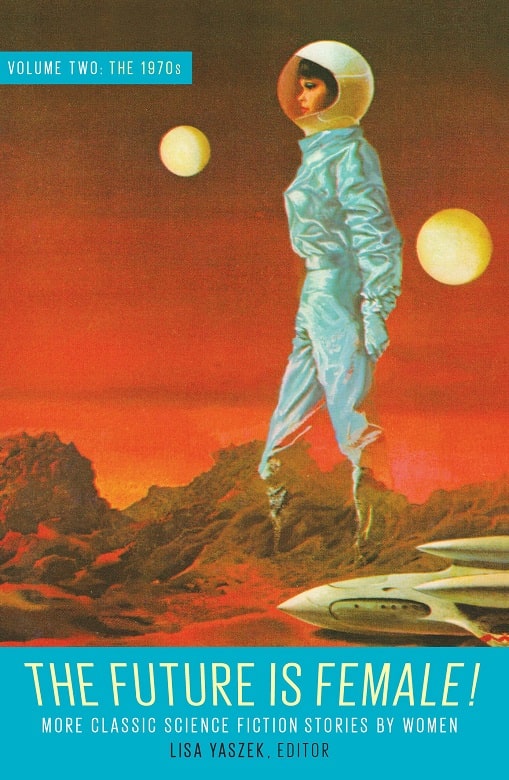 |
The Future is Female! , Volumes One and Two, edited by Lisa Yaszek (The Library of America,
October 2018 and September 2022). Covers by Richard Avedon and Karel Thole
“Under the Skin” is told by a journalist (Baumgardt herself was a journalist.) He is reminiscing about his days on Mars, particularly his involvement in reporting on a rescue attempt at a mine. Things are complicated by several factors: the Martians are particularly sensitive about their mining work (mainly to avoid Earthmen getting control of the supply of diranium.) They are also very protective of their women. And on the flight to the disaster site are two humans he thinks will mess things up: a photographer named Deborah who has entirely too many of her own ideas about things, including the treatment of Martian women; and a man named Vechi who is involved with a mining company, and who the narrator suspects of being more interested in diranium than in rescuing the Martians caught in the mine disaster.
It seems to be leading up to a conventional “Earth idealists vs. Earth predators vs. Martian interests” conflict, but something different (and still fairly conventional) is really going on. It’s a sweetly romantic story that I liked on its own terms, mixed with a degree of regret for what we lose when we get to understand another people (and they us)… I’m not sure this is a lost classic or anything, but it’s a story that is still well worth reading.
Illustration for “Death in Transit” by Emsh
“Death in Transit” is another pretty good story on a familiar subject. In this case it’s about a starship taking a group of people in suspended animation to another planet. The ships are always captained by a stable husband and wife pair, to keep each other sane through the long journey alone. But Clifton West’s wife dies in an accident early in the trip, and he fears he will go insane. So (shades of the movie Passengers!) he looks through the passenger list and finds a likely looking woman to wake. Thankfully, unlike in Passengers, this story realizes how creepy such an action is, and lets things play out honestly (in a context, mind you, of 1950s standard sexual attitudes.) This might be the best Jerry Sohl story I’ve read… again, no lost classic, but a solid work.
“Variety Agent,” by Peter Phillips, is a slight but decently entertaining piece about a down on his luck drunk former street magician who gets an intriguing offer from a strange man — a man from the future, who thinks even a drunk will be interesting to people of his day — and then curiously turns the table on this guy. (Maybe!)
James Blish’s “Sponge Dive” features the discovery that someone is buying up sponge zirconium, which apparently is mainly useful for making either nuclear reactors, or bombs. This is all traced to South Africa, and a plot to use the bombs to force the South African government to come to fair terms with its oppressed black population. The protagonist, though sympathetic with the hope to eliminate apartheid, doesn’t think nuclear war is the right way… and comes up with an alternate solution. Fair enough, if a bit dry… and then the last page adds a bit of casual racism just for kicks, I guess.
Next is Betsy Curtis’ “Rebuttal,” which as I indicated above is a response to Clarke’s “The Star.” A priest is brought to a Catholic hospital where people returning from the expedition to the remnant of the supernova that, according to Clarke’s story, signaled the birth of Christ to the magi, are being treated for their despair and guilt. The priest tries to reassure them that as this was all God’s plan, there is no need for their despair. His main argument is basically that the people of the planet destroyed by the supernova would have realized that their sacrifice was for a greater cause, and anyway are all in heaven now. I have to say, I found this argument unconvincing.
All five books in the Infinity anthology series, edited by Robert Hoskins
(Lancer Books, 1970-73). Covers by Jim Steranko (#1-3) and Ron Walotsky (#4 & 5)
Chester Cohen was another Futurian (as was editor Larry T. Shaw.) He published some five stories, this being the last; and some artwork (some in collaboration with Damon Knight (speaking of Futurians — and Blish was another.)) He also was married to Laura Goforth, who is very slightly known in the SF field for having collaborated with Avram Davidson on the story “Love Called This Thing.” “Round-Up Time” is about a panhandler who notices a very strange looking man, then sees him again in a big crowd, apparently making music which is heard differently by everyone — and which makes everyone generous. Then the strange guy leaves, and everyone follows him. The panhandler has no idea what’s happening, but he follows enough to see where they’re all going… I won’t give it away, though it echoes a much more famous Damon Knight story. There is a tiny twist at the end of this one.
Finally, “The Mob” is about a professor who has created a super-powerful computer. His neighbors are suspicious — they think the computer will take over the world, despite that it has already led to medical advances and such. Anyway, a mob comes to destroy the computer, but the professor carefully talks them down. There is, of course, a twist. Minor work for Robert Sheckley, but not bad.
Rich Horton’s last article for us was a Retro-Review of the December 1957 issue of If magazine. His website is Strange at Ecbatan. Rich has written over 200 articles for Black Gate, see them all here.
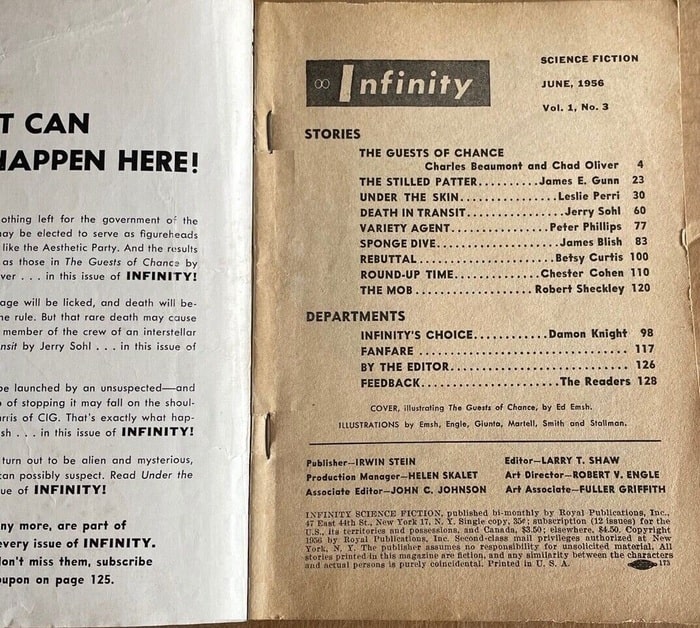
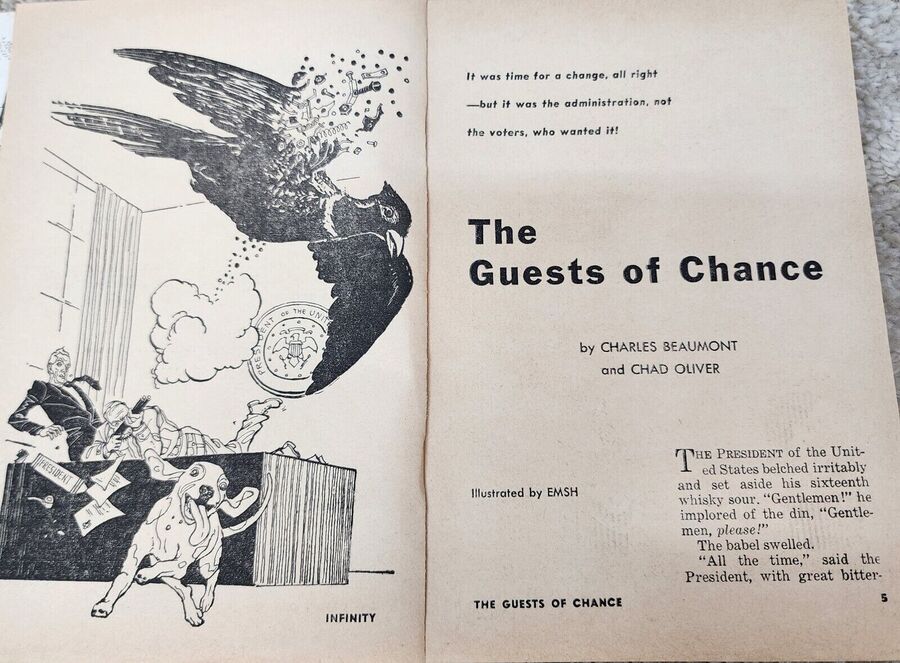
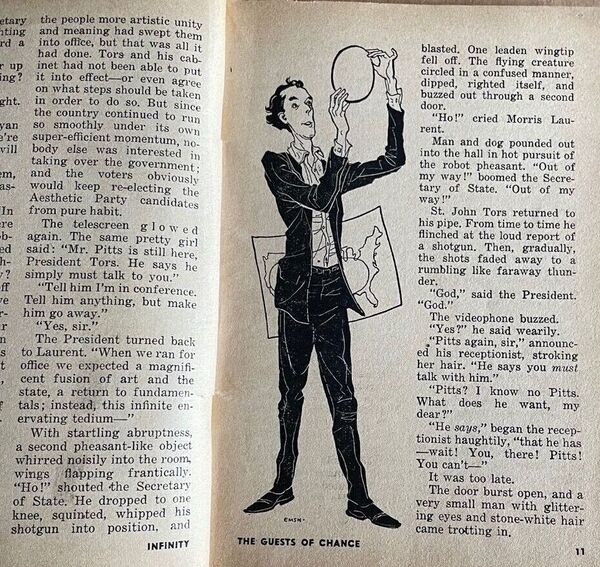
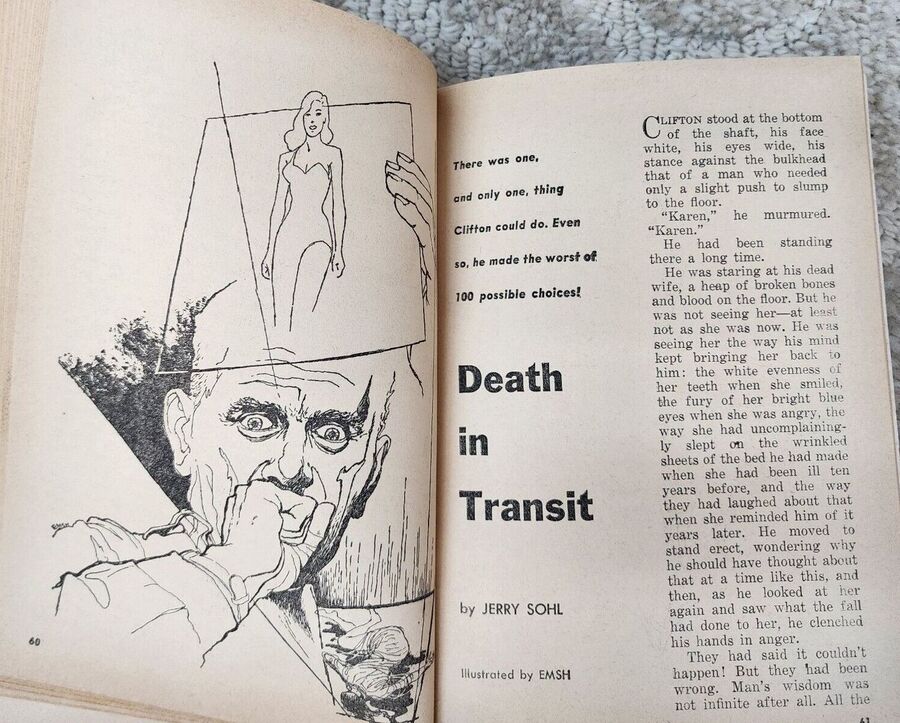
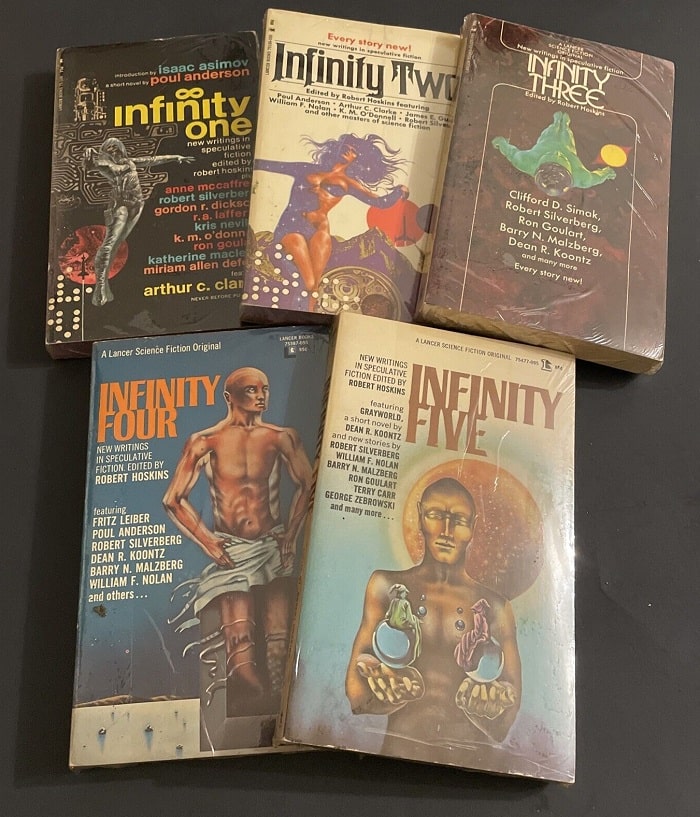
Rich wrote:
> For the record that the magazines of the so-called “first tier” – that is, the Big Three of
> Astounding/Analog, Galaxy, and F&SF – all went through ups and downs in quality and sometimes
> other magazines surpassed them – notably Venture in the late ‘50s, If in the mid-60s, Thrilling Wonder
> and Startling in the early ‘50s, and others.
I just purchased a pair of complete Amazing and Fantastic issues from 1965 (9 and 8 issues, respectively), all edited by the great Cele G. Lalli (later Cele Goldsmith), in her last year as a science fiction editor. And while I haven’t taken the time to read the comparable issues of Analog and Galaxy that year, I have to say that Lalli must have given them a good run for their money, with stories by Roger Zelazny, Norman Spinrad, Fritz Leiber, David R. Bunch, Frank Herbert, Christopher Anvil, Ron Goulart, Edmond Hamilton, John Jakes, John Brunner, Poul Anderson, Clifford D. Simak, Keith Laumer, Murray Leinster, Randall Garrett, Thomas M. Disch, Kate Wilhelm, and Harlan Ellison — and of course, all that great interior art by Emsh and Virgil Finlay!
I definitely should have mentioned Amazing and Fantastic in the Goldsmith/Lalli era as a competitor to the “Big Three” — especially as Analog at the time was well into the late Campbell decline — in fact, I’ll edit the post to mention them (and credit you!)
Thanks Rich! Although you were the one to interest me in the 50-era Amazing. So it all comes back to Rich Horton in the end. 🙂
I’ll never be an expert per se on science fiction but I have an affection for the old digests having a complete run of If and working on the Saint magazines (32 out of 141 to go. I read your article on Infinity and checked out Galactic Central to look at the covers and – ahem- certain it was a typo the site lists 20 issues for Infinity. As an ex-admin in the air Force a bit of a fanatic for correct numbers. No offense intended. I beleive this really came from the Comicbook Price Guide taking years to confirm there is #29 Phantom comic from King to Charlton.
Thanks, RIchard! Not so much a typo as a matho, I think! I miscounted. 20 it is, I’ll correct it when I get home.